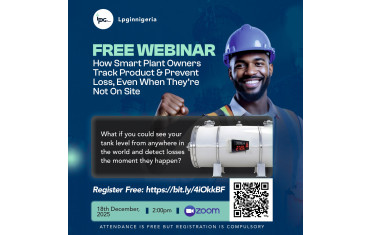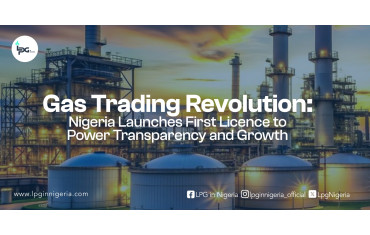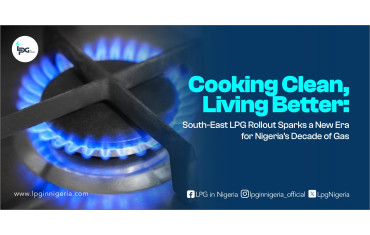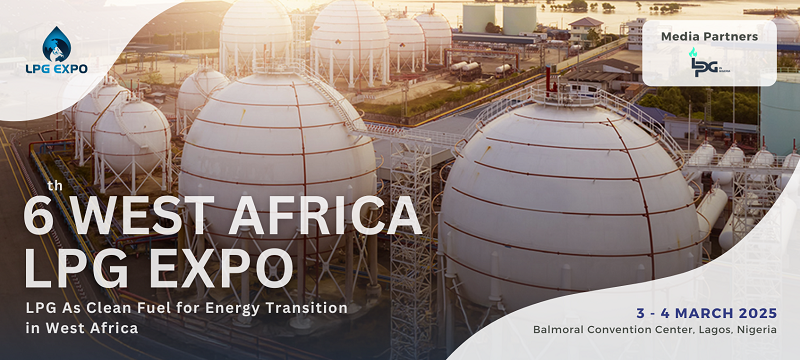- 4387
- 0
Sharing Ideas and Updates on LPG in Nigeria and related information to enable effective collaboration within the LPG Value Chain
A CALL FOR RE-CONSIDERATION TOWARDS AUTOGAS ADOPTION IN NIGERIA

WHAT IS
AUTOGAS?
LPG is a fuel gas. Liquefied petroleum gas or liquid petroleum gas – LPG – also identified as propane or butane, are flammable hydrocarbon gas mixtures used as fuel in vehicles, as Autogas, and as home heating and cooking fuel.
Auto LPG, commonly called Autogas, refers to liquefied petroleum gas – LPG – as used for fuel in internal combustion engines for both cars and stationary generators and other static applications. It is a blend of propane and butane.
The fuel type auto LPG used in LPG-powered cars is quite often called “Autogas”. It is an alternative to petrol (gasoline) and diesel fuel in cars that have had an Autogas conversion. There are fuel types of LPG within Autogas, including propane, butane and a propane-butane mix.
In auto LPG vs petrol cars, the auto LPG fuel type offers the advantages of Autogas conversion in fuel economy and maintenance costs, as well as reduced emissions.
In simple terms, LPG conversion is the addition of a second fuel system including an LPG tank, intake manifold modifications, a new ECU and various fittings. These additions enable the LPG conversion to run on both fuels.
There is no difference between Autogas and LPG except for the possible inclusion of butane along with propane. LPG – Liquefied Petroleum Gas – is a flammable hydrocarbon gaseous fuel including propane, butane and mixtures of these gases also known as Autogas or auto LPG.
Autogas (auto LPG), liquefied through pressurisation, is a fuel that comes from natural gas processing and oil refining and is also referred to as natural gas liquids – NGL.
In different countries, what is supplied can be propane, butane or propane-butane blends.
LPG CARS
Autogas is the usual name for LPG – Liquefied Natural Gas – when it is utilised as fuel for LPG cars and vehicles with internal combustion engines, in addition to generators and other fixed applications. Autogas is a mix of propane and butane. LPG vehicles or LPG cars are vehicles fuelled by auto LPG autogas. An LPG vehicle (LPG car) can be an OEM single-fuel LPG vehicle or dual-fuel LPG conversion that runs on either LPG autogas or petrol.
An LPG car runs on auto LPG Autogas fuel, with 25 million worldwide.
There are four types of autogas conversion systems:
1. Converter-and-mixer systems
2. Vapour phase injection (VPI)
3. Liquid phase injection (LPI)
4. Liquid phase direct injection (LPDI)
DIFFERENCE BETWEEN FUEL TYPE LPG-AUTOGAS VS PETROL (GASOLINE)
Regarding cost, the fuel type LPG is about half the price of petrol cars but you will use about 20% more auto LPG than petrol. The cost saving is more pronounced if you compare it against similar octane petrol.
Comparing fuel type LPG vs petrol (gas or gasoline), auto LPG is a liquefied gas whilst petrol is a liquid at normal atmospheric pressure. The fuel type LPG cost less than petrol and generally has a higher octane rating, at over 100 octane.
The result is that you still save about 40% on your fuel costs, especially when compared to high-octane petrol.
These savings will more than cover the cost of the LPG conversion if you are a driver that racks up a high kilometre count.
LPG fuel consumption costs show that LPG vs gas was 12.3L/100km LPG mileage vs gas (petrol) mileage of 9.9L/100km. The LPG fuel consumption puzzle is solved by the fact that LPG is approximately 50% less expensive than gas, more than offsetting the mileage
WHAT IS THE DIFFERENCE BETWEEN AUTOGAS AND LPG
The fuel type LPG difference between Autogas and LPG, if any, lies in the composition of the Autogas. Auto LPG in Nigeria is 100% propane. Autogas may also be 100% propane or it can be propane: butane mix. The possible butane content is the only fuel type LPG difference between autogas and LPG.
AUTOGAS AS A RESCUE FOR NIGERIANS
In December 2020, President Muhammadu Buhari promised that an autogas policy was in the works, would ensure that vehicles on Nigeria’s roads run on either Compressed Natural Gas (CNG) or Liquefied Petroleum Gas (LPG). By now, analysts expected that at least two million out of the 12 million vehicles on Nigerian roads should be fueled by either autogas or electro-batteries to reduce the demand for petrol. However, this is yet to be the case in the country.
During the virtual launch of the Autogas Initiative on the back of the National Gas Expansion Programme, a much-trumpeted Decade of Gas policy and 203 trillion cubic feet (TCF) of gas resources, President Buhari had projected that nothing less than 40 per cent of vehicles plying Nigerian roads would run on compressed natural gas. The Minister of State for Petroleum Resources, Timipre Sylva, had also disclosed that the Federal Government planned to provide autogas that would cost between N95 to N97 per litre.
An investigation carried out by The Guardian newspaper revealed that Inadequate infrastructure, high cost of gas, lack of proper planning, prevailing harsh economic realities and safety concerns continued to frustrate the president’s Autogas plan. The initial projection was that motorists would pay about N250,000 to convert their vehicles from petrol to gas. With the way the Naira has been dancing yo-yo in recent times, that estimate must have doubled by now, making the scheme farther from the grasp of motorists desirous of seeking alternatives to petrol. The N250 billion set aside by the federal government for willing investors in Autogas assembly plants to ensure that Autogas conversion of vehicles was accelerated, has been rendered insignificant by the passage of time. The funds would barely convert 100,000 vehicles to Autogas at today’s market rates.
Marketers complain that because of the typically Nigerian way of doing things, the business is becoming too risky to venture into. Little wonder, there are only two CNG-compliant stations in the entire Federal Capital Territory, Abuja.
WHAT ARE THE PROS AND CONS OF AUTOGAS ADOPTION IN NIGERIA
Pros
• Autogas fuel cars have lower running costs.
• Auto LPG may prolong engine life.
• Autogas fuel is less expensive than petrol or diesel.
• Engine oil and spark plugs need changing less often with LPG, so service costs are reduced.
• Environmental benefits include reduced particulate, CO2 and NOx emissions.
• Auto LPG fuel octane ratings over 100 allows for higher compression ratios, which can increase power output.
Cons
• The biggest negative is the extra cost involved in buying an LPG car or converting a car to LPG fuel. However, the cost is typically recovered quickly through the realised savings.
• In some countries like Nigeria it may be a bit more difficult to find an LPG service station but, in most countries, they are becoming more numerous every year.
If the adoption of Autogas powered vehicles is taken seriously by the government and potential investors then it would be a relief for many Nigerians. The current queues at the fuel station going on nationwide will be a thing of the past which is a welcome change if you as us by the way.















0 Comment.